Moniek Bloks's Blog, page 45
June 27, 2024
Queen Mary’s Cluster Earrings
Queen Mary’s Cluster Earrings are “each with a large cushion-cut brilliant with two concentric millegrain and pavé-set bands of small diamonds.”1
Embed from Getty ImagesQueen Mary had the earrings created in 1939 by having the Mackinnon diamonds removed. These diamonds had initially been a pair of solitaire earrings given to her for her wedding in 1893 by Sir Willian Mackinnon. She had them replaced with two large brilliants, which had also been given to her as a wedding present.
Queen Elizabeth II inherited the earrings in 1953.
The post Queen Mary’s Cluster Earrings appeared first on History of Royal Women.
June 25, 2024
Maria of Portugal – “Not for lack of greatness” (Part two)
However, Maria now also wished to see her mother despite her brother’s attempt to persuade her. She had renounced all possibilities of a marriage, forcing her brother to make another decision. She “decided to remain single and in the kingdom, in the midst of her friends, her books and the poor, devoting herself from now on to the sciences and arts, to charitable works and religious care.”1
At last, in April 1557, he decided to let Maria join her mother in Castile. Eleanor’s brother, Charles V, wrote letters of thanks to King John and Queen Catherine and shared the good news with Eleanor. Her departure was announced for 15 June, but then King John died suddenly. Maria changed her mind and refused to leave Portugal. The new King was Maria’s great-nephew, King Sebastian I, who was just three years old.
Eleanor was hurt and confused by Maria’s change of heart, but Maria wrote back that she feared that King John’s death would mean that she would not be allowed to return to Portugal and that she might face financial difficulties in Castile. However, she offered to spend several days with her mother on a pilgrimage to Our Lady of Guadalupe. It seemed like any permanent move was entirely off the table. Time passed as Maria refused to travel in the winter, and Eleanor offered to travel to Badajoz, which was not far from the border. Finally, at the end of 1557, Eleanor set off towards Badajoz with her sister Mary.
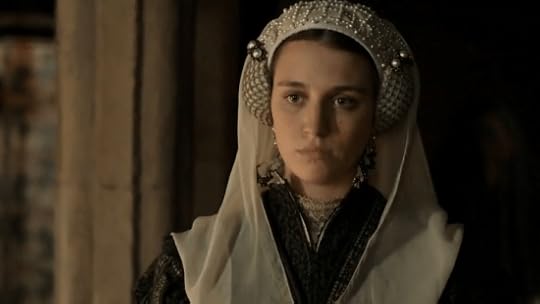 Maria as portrayed in Carlos, Rey Emperador (2015)(Screenshot/Fair Use)
Maria as portrayed in Carlos, Rey Emperador (2015)(Screenshot/Fair Use)Eleanor and Mary arrived first, on 23 December 1557, and she waited anxiously for Maria to arrive. She finally arrived on 18 January 1558. One chronicler wrote, “It is not easy to describe the tears of joy that were shed on both sides: the Queen of France (Eleanor) admiring her daughter, and the Queen of Hungary (Mary) admiring her niece, who by her presence and appearance was dignified, serious in her words and modest with the natural grace and pleasantness of her person; the Queen of Hungary was spellbound, even though she lacked the bond of blood.”2
The festivities of the reunion lasted for 20 days while Eleanor tried to convince her daughter to come live in Castile with her. It was written that “she wanted nothing more in this life than to be comforted by her company.”3 Nevertheless, Maria remained steadfast in her determination to return to Portugal. On 7 February 1558, Maria left Badajoz and returned to Portugal.
Deeply upset at being separated from her daughter again, Eleanor set off to Guadalajara a few days later with Mary. Just a little while later, she was forced to stop at Talaveruela after a severe asthma attack. She became ill with a high fever and violent cough. She died on 18 February as her brother Charles arrived just in time to say goodbye. She had remained lucid until the end and asked to be buried in a modest ceremony.
Maria only learned of her mother’s death upon her return to Lisbon. She was to be her mother’s universal heir, which made her immensely wealthy. Eleanor was followed in death by her brother Charles on 21 September 1558 and her sister Mary on 18 October 1558.
Maria established her own literary salon at the Portuguese court, filling it with learned women. She actively promoted their writings and the building of several churches.
Pierre de Bourdeille later wrote about her, “I saw the Infanta of Portugal, daughter of the late Queen Eleanor, in the same resolution; died a girl and virgin at the age of sixty or more. This was not for lack of greatness, for she was great in every way; nor for lack of possessions, for she had plenty of them, even in France […] nor for lack of natural gifts, for I saw her in Lisbon at the age of forty-five, a very beautiful and agreeable girl, of good grace and good looks, gentle, pleasant, and well deserving of a husband in every way. Courteous even to us French. I can say this because I had the honour of talking to her often and privately.”4
Maria became ill in July 1577 and wrote her will. She died of tuberculosis on 10 October 1577. She was 56 years old.
The post Maria of Portugal – “Not for lack of greatness” (Part two) appeared first on History of Royal Women.
June 24, 2024
Joanna of Austria – The secret Jesuit (Part two)
During her regency in Spain, she took vows of poverty, chastity, and obedience as the only woman in the male-only Jesuit order under a pseudonym, Mateo Sánchez.1 This was only allowed on the condition that her membership be kept an absolute secret.2 As a powerful protector of the Jesuits, she intervened on their behalf several times. In 1559, she founded the Convent of Las Descalzas Reales. She had so-called women’s quarters installed, where Philip’s wife and daughters could also come to pray.
When Joanna was released from the regency in 1559, she wanted to return to Portugal. By then, her grandfather Charles had died, and Philip had returned from England following the death of his wife, Queen Mary I. However, “Queen Catherine had already given more than enough proof that she was not the type of woman to withdraw easily from the political life.”3
Joanna’s wish for the Portuguese regency never materialised and she settled in Spain. She kept up a correspondence with her son and regularly asked for portraits of him so she could see how he was growing up. Joanna became close to King Philip’s third wife, Elisabeth of Valois. They saw each other practically every day and regularly attended mass together. They were also responsible for the entertainment at court. On 20 January 1568, they organised a masked ball, which was cancelled because of Carlos’s arrest. Carlos’s mental health had been deteriorating for some time. The Portuguese ambassador wrote, “I found her horrified and in tears over the event. I comforted her as best I could, without much success.”4 When Queen Elisabeth died a few months later, she was again in tears. Joanna comforted Elisabeth and Philip’s two surviving daughters, whom “I love and treat like my own daughters like the Queen used to do.”5It was Joanna who organised the funeral, while Philip withdrew to a convent to mourn her. Joanna became the glue that held the family together. When Rudolf and Ernst, her sister’s sons, came to Spain for their education, she also became close to them.6
Joanna never wished to remarry, but this did not mean that negotiations weren’t entered on her behalf. The idea was even floated that she would marry her nephew, Carlos, so that she may be able to rule on his behalf should he be incapable of doing so. However, in the end, no suitor made it across the finish line.
Her son Sebastian had begun to develop an interest in a crusade to Morocco, which worried Catherine as he had not yet married and fathered an heir. Several marriage options had already been discussed for him, such as Isabella Clara Eugenia, the eldest daughter of King Philip II of Spain, and his third wife, Elisabeth of Valois. He remained reluctant to marry and “shows so much hatred towards women, that he takes his eyes off them and if a lady serves him a glass, he tries to take it without touching her.”7
On 7 September 1573, Joanna died at the age of 38 after a long and painful illness, reportedly uterine cancer.8 Her son withdrew to a convent for three days to mourn the mother he had never known. It wasn’t until November that funeral masses were said for her soul at the Jerónimos Monastery. Catherine used this opportunity to press the issue of marriage again, but Sebastian became more focused on his crusade. He left for the Algarve, although Catherine feared it was his intention to go to Africa. She was in “a lot of pain and anguish.”9 She was right, and he indeed went to Morocco. He would not return for many months, and it was feared that he had died. When he finally entered Lisbon on 30 November 1574, he was received by cheering crowds.
Following Joanna’s death, her sister Maria wrote to their brother, “I cannot help admitting to Your Highness that I feel very alone without her, even though we lived so far apart.”10 Philip was “unable to hide his sadness.”11
Five years after Joanna’s death, Sebastian disappeared and was most likely killed during a battle in Morocco. He was 24 years old and left no children.
The post Joanna of Austria – The secret Jesuit (Part two) appeared first on History of Royal Women.
June 23, 2024
Joanna of Austria – Mother of the King (Part one)
Joanna of Austria was born in Madrid on 24 June 1535 as the daughter of Isabella of Portugal and Charles V, Holy Roman Emperor. She would be their last surviving child, and she had two elder surviving siblings: the future King Philip II of Spain and Maria of Austria. At the time of her birth, her father was away on campaign, while her mother acted as regent.
Her father had little interest in the education of his daughters, although he did arrange for the employment of his late wife’s former ladies-in-waiting as educators for them. Isabella had died in 1539 following the birth of a stillborn son. Following their mother’s death, the two sisters were raised separately from their brother, Philip. Their household eventually settled in Alcalá, while Philip remained in Madrid.
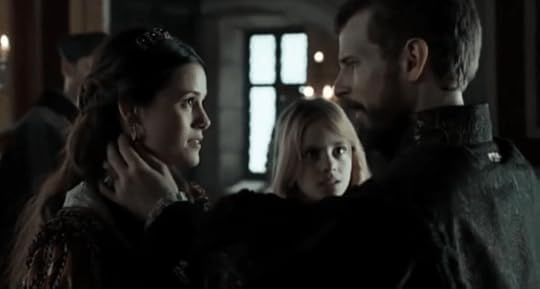 Joanna with her father and sister as portrayed in Carlos, Rey Emperador (2011) (Screenshot/Fair Use)
Joanna with her father and sister as portrayed in Carlos, Rey Emperador (2011) (Screenshot/Fair Use)After morning prayers, the rest of the morning was dedicated to the learning of reading and Christian prayers. They also learned traditionally feminine domestic activities.1 In 1548, Maria married their first cousin, the future Maximilian II, Holy Roman Emperor, after which Joanna joined the household of her nephew, Carlos. When she eventually left to marry, both she and Carlos reportedly cried for three days.2
On 11 January 1552, Joanna married the heir to the Portuguese throne by proxy. John had been a sickly child who was often treated with bloodletting, which served to weaken him further. In his infancy, it was feared he was deaf and mute, as he could not speak at the age of three. However, with the deaths of many of his siblings, all hope was now vested in him, and his parents fretted over him. After the proxy wedding, John was given his own establishment. He reportedly fathered an illegitimate daughter during this time.3
After her departure was repeatedly postponed, Joanna finally arrived in October 1552. John had been impatient for her arrival, and he had written, “If I love her now, I will love her much more when I see her.” 4 As a wedding present, John’s mother, Catherine, presented her new daughter-in-law with a diamond necklace with a diamond cross and a pearl necklace. Catherine and Joanna appeared to be getting along, and Joanna “asks her for her opinion and advice in everything.”5 After the wedding, Joanna and John moved into a house close to the Ribeira Palace. Joanna fulfilled her primary duty almost immediately as she quickly fell pregnant. However, it became clear that John was sick as he was quickly losing weight. This was likely caused by diabetes, which had no treatment. On 31 December, he fell unconscious, and he died on 2 January 1554 at the age of 16.
Just 18 days later, Joanna gave birth to a son with Catherine holding her hand. He was named Sebastian, as he was born on the feast day of Saint Sebastian. It was likely that Joanna was only told of her husband’s death after the delivery. His parents had tried to conceal the news from her and changed out of mourning clothes when they visited her. She was devastated and threw herself onto her bed in tears. Catherine had now lost all of her children, although her new grandson now represented the future of the monarchy. He was baptised eight days after his birth, and Catherine was one of his godparents. The birth of a new heir was celebrated throughout the country, and the future King was baptised eight days later.
Even before her son had been born, Ambassador Luis Sarmiento wrote to Joanna’s father that she should return to Castile to act as regent in her brother’s absence. However, her parents-in-law expressed “with many tears and emotion the desire, which was also that of the whole kingdom, that the princess remains in Portugal, with the little Prince.”6
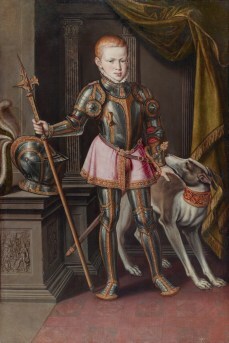 Sebastian, King of Portugal (public domain)
Sebastian, King of Portugal (public domain)Her brother Philip would be travelling to England to be married to Queen Mary I of England. Catherine and Manuel reluctantly gave their consent to this on the condition that she would return to Portugal when Philip returned to Spain. However, Joanna never returned to Portugal and never saw her son again. On 15 May, Joanna and Catherine stayed overnight at the Convent of Consolacao with little Sebastian. She was handed over to her brother at the Alcantara, and he stayed with her for five days before heading to England. Joanna travelled to Valladolid via Tordesillas, where she visited her namesake grandmother, Queen Joanna.
Joanna entered Valladolid in her capacity as regent of Castile, a role she would fulfil until 1559. She was reunited with young Carlos, with whom she had lived before her marriage. For the first years, Joanna fielded letters from both her father and her brother during her regency. Charles initially resisted the appointment of Joanna as regent because he believed she was too young.7 Nevertheless, Joanna was considered to be a capable regent, and she worked with a regency council. After her father’s formal abdication in 1556, Joanna was formally only the regent for Philip, but Charles remained involved as an authority that needed to be consulted.8
In 1557, her former father-in-law died, making her young son Sebastian the new King of Portugal. Her former mother-in-law, Catherine, was appointed as regent for the young King with the assistance of his uncle, Henry. Joanna felt that this task was meant for her, as his mother, but her father vetoed her aspirations.9 Joanna’s letter regarding the regency for her son was intercepted by her father, and he wrote to her,” ‘With these things one has to act with all possible courtesy, especially you being a daughter.”10
Part two coming soon.
The post Joanna of Austria – Mother of the King (Part one) appeared first on History of Royal Women.
June 22, 2024
A look at Princess Carolina of Bourbon-Parma as she turns 50
Princess Carolina of Bourbon-Parma was born on 23 June 1974 as the daughter of Princess Irene of the Netherlands and Carlos Hugo, the titular Duke of Parma.
She has two older brothers and an elder sister: Prince Carlos (born 1970), Princess Margarita (born 1972), and Prince Jaime (born 1972). Her parents’ marriage was quite controversial, leading them to marry without parliamentary approval. This means that Princess Irene and her children are excluded from the Dutch line of succession.
Carolina was born in the Netherlands and baptised in France at the Castle of Lignières. Her godparents were Prince Claus of the Netherlands, Princess Christina of the Netherlands, and Princess Marie des Neiges of Bourbon-Parma.
Her parents divorced in 1981 and she moved with her mother and siblings to Soest in the Netherlands.
Carolina went on to study political science at the University of Amsterdam and Harvard University. She also gained an M.Sc. in Forced Migration from the University of Oxford. She currently works for the United Nations in Geneva.
On 21 April 2012, Carolina married Albert Brenninkmeijer in a civil ceremony, followed by a religious ceremony on 16 June 2012. They went on to have two children: Alaïa-Maria (born 2014) and Xavier (born 2015).
Embed from Getty ImagesAlthough her title through her father is titular, Carolina and her siblings were incorporated into the Dutch nobility with the title of Prinses de Bourbon de Parme (Princess of Bourbon-Parma) and with the style of Her Royal Highness.1 She is a first cousin of King Willem-Alexander of the Netherlands but does not belong to the Dutch Royal House.
The post A look at Princess Carolina of Bourbon-Parma as she turns 50 appeared first on History of Royal Women.
Book News Week 26
Book News Week 26 – 24 June – 30 June 2024
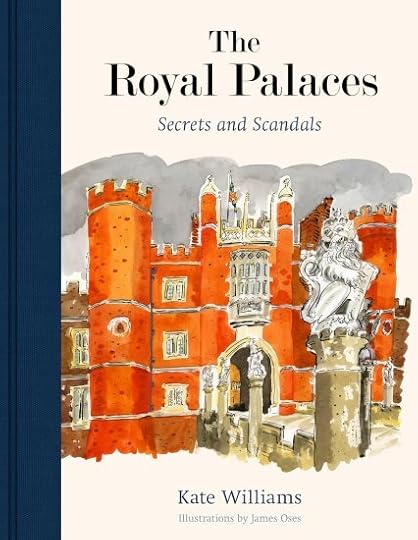
The Royal Palaces: Secrets and Scandals
Hardcover – 27 June 2024 (UK)
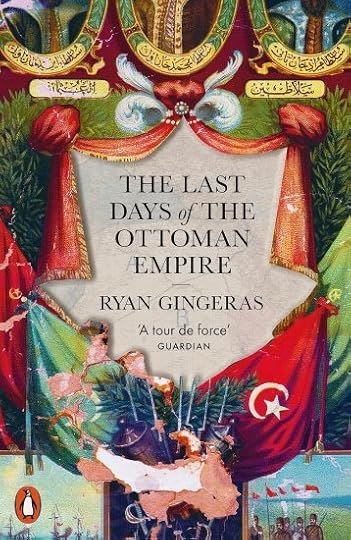
The Last Days of the Ottoman Empire
Paperback – 25 June 2024 (US)
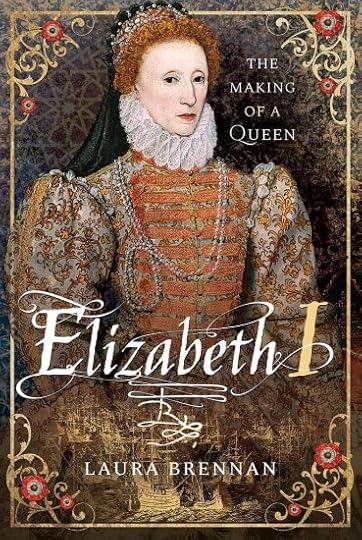
Elizabeth I: The Making of a Queen
Paperback – 30 June 2024 (UK)
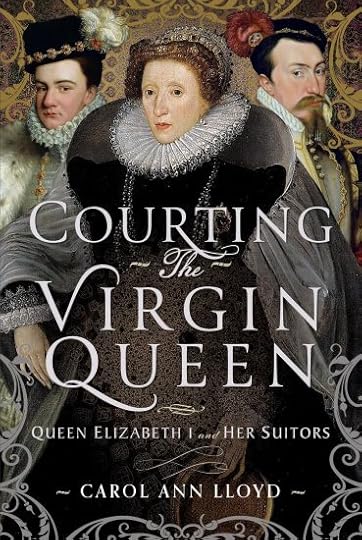
Courting the Virgin Queen: Queen Elizabeth I And Her Suitors
Hardcover – 30 June 2024 (UK)
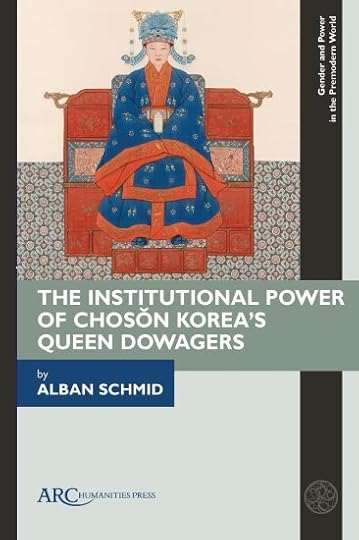
The Institutional Power of Choson Korea’s Queen Dowagers (Gender and Power in the Premodern World)
Hardcover – 30 June 2024 (US & UK)
The post Book News Week 26 appeared first on History of Royal Women.
June 20, 2024
Taking a look at Queen Mother Tshering Yangdon
Tshering Yangdon was born on 21 June 1959 as the daughter of Yab Dasho Ugyen Dorji and Yum Thuiji Zam.
Her names mean long life (Tshering) and precious jewel (Yangdon). She received her education at the St. Joseph’s Convent and St. Helen’s School.
Along with her three sisters, Dorji Wangmo, Tshering Pem Wangchuck and Sangay Choden, she married Jigme Singye Wangchuck, the King of Bhutan, on 31 October 1988. A private wedding had taken place in 1979.
 Photo: Royal Office for Media
Photo: Royal Office for MediaIn 1988, the New York Times reported the words of the Foreign Minister, who said, “Private wedding ceremonies are quite common among the Bhutanese. But a private wedding is not good enough for a King. Pressure had been building up for a proper public ceremony to be attended by all the senior members of our ecclesiastical orders.”1 By the time of the public wedding, the King already had eight children with his four brides. During the ceremony, his and Tshering Yangdon’s son was named as Crown Prince. He is the current King of Bhutan.
Together, they went on to have three children: King Druk Gyalpo (born 1980), Princess Ashi Dechen Yangzom Wangchuck (born 1981) and Prince Gyaltshab Jigme Dorji Wangchuck (born 1987). Through her three children, she had seven grandchildren.
Her husband abdicated in favour of their son in 2006, and he became known as the King Father. Tshering Yangdon and her three sisters are all known as Queen Mother.
Tshering Yangdon is the patron of The Bhutan Nuns Foundation (BNF).
The post Taking a look at Queen Mother Tshering Yangdon appeared first on History of Royal Women.
June 18, 2024
Royal Wedding Recollections – The Earl of Wessex & Sophie Rhys-Jones
On 19 June 1999, Sophie Rhys-Jones married Prince Edward, the youngest son of Queen Elizabeth II.
Sophie and Edward met at a tennis event in 1993, and their engagement was announced on 6 January 1999. The engagement ring, made by Garrard & Co., featured a two-carat oval diamond with two heart-shaped gemstones set in an 18-carat white gold ring.
Embed from Getty ImagesThe wedding took place at St George’s Chapel, Windsor Castle, and it was not considered a state occasion. The future King Charles III and the Duke of York served as Edward’s supporters.
Sophie arrived on her father’s arm in a Rolls Royce, and he walked her down the aisle. The Bishop of Norwich performed the ceremony. As per tradition, the wedding ring was made from Welsh gold.
Embed from Getty ImagesSophie’s wedding dress was designed by Samantha Shaw. It consisted of a long, fitted coat with long sleeves and an ivory train. She wore a diamond tiara made from four antique pieces from Queen Elizabeth II’s private collection.
Embed from Getty ImagesAfter the ceremony, the newlyweds rode in an open, horse-drawn carriage to St George’s Hall, where their reception would take place. Sophie sent her wedding bouquet to Westminster Abbey, where it would rest on the Grave of the Unknown Warrior.
Shortly before the wedding, Prince Edward was created Earl of Wessex and Viscount Severn. This meant that Sophie became Her Royal Highness The Countess of Wessex upon marriage. They went on to have two children together: Louise (born 2003) and James (born 2007). In 2023, Prince Edward was created Duke of Edinburgh.
The post Royal Wedding Recollections – The Earl of Wessex & Sophie Rhys-Jones appeared first on History of Royal Women.
June 17, 2024
Maria of Portugal – “Not for lack of greatness” (Part one)
Maria of Portugal was born on 18 June 1521, the daughter of King Manuel I of Portugal and Eleanor of Austria. Her father had been married twice before, to Isabella of Aragon and Maria of Aragon, who were Eleanor’s aunts. Maria had half-siblings from both these marriages, although some had predeceased her. She also had one full sibling, a brother named Charles, who died in April 1521, shortly after his first birthday.
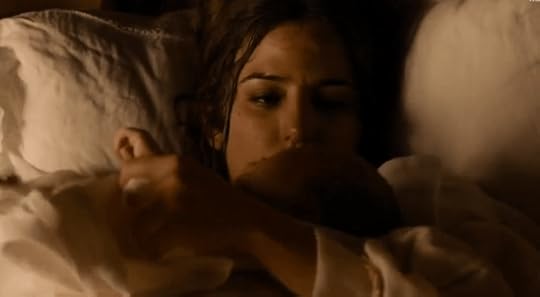 Maria’s birth as portrayed in Carlos, Rey Emperador (2015)(Screenshot/Fair Use)
Maria’s birth as portrayed in Carlos, Rey Emperador (2015)(Screenshot/Fair Use)Maria would never know her father as he died on 13 December 1521 when she was just six months old. He was succeeded by Maria’s elder half-brother, John III. Although Eleanor’s wedding clause had stipulated that she and any children she had would be allowed to leave Portugal upon King Manuel’s death, the new King refused his permission to allow Maria to leave with her mother. Nevertheless, Eleanor had to return home, and negotiations continued. She was still young, only 23 years old, and could serve her brother, Charles V, Holy Roman Emperor, by making another advantageous match. However, King John would not let Maria leave and so Eleanor would have to leave her little daughter behind. She left on 15 May 1523, although she would always regret leaving Maria behind.
Maria was left in the care of a governess named Jeanne de Blaesvelt, who would later also become her lady-in-waiting. Her education was supervised by her half-brother, King John. In 1525, Eleanor’s sister, and thus Maria’s aunt, Catherine, became the new Queen of Portugal as King John’s wife and Maria’s elder half-sister Isabella became Empress as the wife of Charles V, Holy Roman Emperor. During this time, Eleanor attempted to be reunited with Maria and she promised John not to marry her off without his consent. King John would not be moved, and so he and Catherine became Maria’s foster parents. However, John did not care very much for his younger sister as he disapproved of the match between Eleanor and his father. But he made sure she had a good education, and she became known as one of the most cultured princesses in Europe.
She was still very young when a possible marriage to the French Dauphin (later Francis III, Duke of Brittany, who predeceased his father) was arranged, but this would eventually fall through. Her mother would remarry to King Francis I of France in 1530 as part of the Treaty of Cambrai. Eleanor continued to wish to be reunited with Maria, and she was kept informed of her health and education.
She also received portraits of Maria, and after receiving a new one in 1542, she wrote to Maria, “I rejoiced greatly, my daughter, with your painted portrait, for I cannot see the real one. Please God, that this will happen one day, with your contentment, which will also be mine.”1 For this reason, she was also in favour of the match with Dauphin Francis, as this would mean they could be reunited in France. Despite Eleanor’s wishes, Maria continued to be linked to others as well, such as her cousin, the future Maximilian II, Holy Roman Emperor.
In 1537, Maria received her own household in the palace of Santa Clara, and several female tutors, such as Paula Vicente, a scholar and musician, and Angela and Luiza Sigea, came to further her education.
As Maria reached a marriageable age, Eleanor felt it was her motherly duty to see her daughter settled, and she desperately wrote to her sister Catherine to talk to her husband, King John, to allow Maria to come to France. She also wrote to Maria asking her not to consent to anything less than being allowed to go to France with a full dowry. Once again, John refused to let Maria go, and he promised to marry her off quickly and as well as possible. Despite everything Eleanor had tried to do, Maria was effectively a stranger to her now. In 1544, Maria was created Duchess of Viseu in her own right, with the appropriate income.2
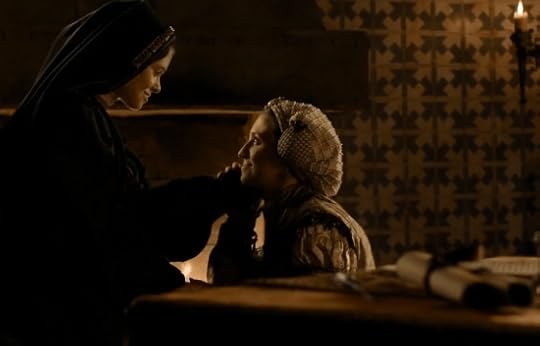 Maria and Catherine as portrayed in Carlos, Rey Emperador (2015)(Screenshot/Fair Use)
Maria and Catherine as portrayed in Carlos, Rey Emperador (2015)(Screenshot/Fair Use)After Eleanor was widowed in 1547, she again tried to be reunited with Maria, but as a dowager Queen, she had less influence than before. In 1552, she wrote to King John and implored God not to let her leave this life without seeing Maria again.3 Eleanor returned home to Castile, but even there, Maria was not allowed to join her. She would be allowed to come to Portugal, but it would be inappropriate for Maria to travel to Castile.
Part two coming soon.
The post Maria of Portugal – “Not for lack of greatness” (Part one) appeared first on History of Royal Women.
June 16, 2024
Empress Cao Jie – The last Empress of the Han Dynasty
Empress Cao Jie was the last Empress of the Han Dynasty. She was the second Empress of Emperor Xian, the last Emperor of the Han Dynasty. Empress Cao Jie was the daughter of Cao Cao, who was a military tyrant who controlled the Han Empire. Despite being from a family that caused the fall of the Han Dynasty, Empress Cao Jie has often been deemed a hero.[1] She is seen as a loyal wife who tried to protect both her husband and the Han Dynasty.[2]
In circa 196 C.E., Empress Cao Jie was born in Xuchang.[3] Her father was the infamous military tyrant named Cao Cao (who would later be posthumously known as Emperor Wu of Wei).[4] She had numerous brothers and sisters. During the last years of the Han Dynasty, it was very chaotic.[5] There were many wars and uprisings that would cause the downfall of the Han Dynasty.[6] Cao Cao eventually came out as the victor of these wars and had complete control of the Han court.[7] Emperor Xian was his puppet.[8] In 213 C.E., Cao Cao declared himself the Duke of Wei.[9]
Two months later, Cao Cao presented his three daughters—Cao Xian, Cao Jie, and Cao Hua—as potential concubines for Emperor Xian.[10] Emperor Xian accepted them and gave them each the title of Worthy Lady.[11] Cao Xian and Cao Jie immediately entered the palace. Cao Hua was still a child, so she had to be sent home for a year before she could enter the palace as an imperial concubine.[12] Afterwards, Minister Wang Yi and Marquis Ting of Anyang came to his home to congratulate him on his daughters being made imperial concubines.[13]
In late 214 C.E., Cao Cao learned that Empress Fu Shou had plotted an assassination attempt. He deposed Empress Fu Shou and imprisoned her. On 8 January 215 C.E., Empress Fu Shou died. Empress Fu Shou’s death left the Empress position vacant. On 6 March 215 C.E., Cao Jie was officially invested as Empress of China. Empress Cao Jie bore Emperor Xian a daughter named Liu Man.
On 15 March 220 C.E., Cao Cao died. He was succeeded by his son, Cao Pi. Unlike Cao Cao, who was content with having a puppet Emperor, Cao Pi desired the throne for himself.[14] Cao Pi immediately forced Emperor Xian to abdicate.[15] Cao Pi gave Emperor Xian the title of Duke of Shanyang. Empress Cao Jie became Duchess of Shanyang. Her daughter Liu Man was made Princess Changle.
Cao Pi sent for emissaries to the former Empress Cao Jie, requesting her to send over the imperial seal and ribbon.[16] The former Empress Cao Jie refused several times to see the emissaries.[17] At last, she gave in. One by one, she reprimanded the emissaries for the “crime of usurpation.” [18] In a fit of rage, she threw the imperial seal and ribbon.[19] The emissaries were ashamed.[20] They kept their heads down and did not look at her as she cursed them with the words: “You will not be blessed by heaven!” [21] The emissaries dared not speak.[22] They quickly picked up the seal and ribbon, dusted off the dust, and hurried out of the room.[23]
The former Emperor and Empress left the palace and lived in retirement as the Duke and Duchess of Shanyang.[24] The Han Dynasty was officially abolished. Cao Pi ascended the throne as Emperor Wen of Wei. However, he only reigned in the Wei kingdom.[25] China was broken into three kingdoms known as the Three Kingdoms era.[26] In 220 C.E., Liu Bei did not recognize Cao Pi as his Emperor and declared himself the Emperor of Shu. In 222 C.E., Sun Quan also did not recognize Cao Pi as his Emperor. He made himself Emperor of Wu. Thus, China was divided.[27] These events were dramatized in the infamous classic historical fiction novel Romance of the Three Kingdoms.
Duchess Cao Jie continued to live peacefully with her husband, the former Emperor Xian, until his death on 21 April 234 C.E.[28] He was given a funeral with the rites of an Emperor.[29] After Emperor Xian’s death, she remained a widow for twenty-six years.[30] She died on 2 July 260 C.E. She was given a funeral with the rites of an Empress.[31] She was buried beside Emperor Xian in Shan Tomb.[32] She was given the posthumous title of Empress Xuanmu.
Empress Cao Jie has often been seen as a hero. As the daughter of Cao Cao, it was expected that she would be loyal to her father and brother.[33] Yet, she was loyal only to her husband, Emperor Xian.[34] She tried to protect her husband and his dynasty by refusing to hand over the imperial seal and ribbon.[35] Since then, Empress Cao Jie has been seen as a virtuous wife who followed her husband’s wishes instead of her family’s interests.[36] Confucian scholars have admired Empress Cao Jie for nearly two thousand years.[37] They have used her as a model for an ideal wife.[38]
Sources:
iNews. (n.d.). “Cao Cao’s daughter, the last empress of the Han Dynasty, scolded Cao Pi for one incident and cursed him not to die”. Retrieved on 9 October 2023 from https://inf.news/ne/history/ee3e3e465....
McMahon, K. (2013). Women Shall Not Rule: Imperial Wives and Concubines in China from Han to Liao. NY: Rowman and Littlefield.
Wang, B. (2015). “Cao Jie, Empress of Emperor Xian”. Biographical Dictionary of Chinese Women: Antiquity Through Sui, 1600 B.C.E. – 618 C.E. (L. X. H. Lee, Ed.; A. D. Stefanowska, Ed.; S. Wiles, Ed.). NY: Routledge. pp. 113-114.
[1] Wang, 2015
[2] Wang, 2015
[3] Wang, 2015
[4] Wang, 2015
[5] Wang, 2015
[6] Wang, 2015
[7] McMahon, 2013; Wang, 2015
[8] McMahon, 2013
[9] Wang, 2015
[10] Wang, 2015
[11] Wang, 2015
[12] Wang, 2015
[13] Wang, 2015
[14] iNews, n.d., “Cao Cao’s daughter, the last empress of the Han Dynasty, scolded Cao Pi for one incident and cursed him not to die”
[15] McMahon, 2013
[16] Wang, 2015
[17] Wang, 2015
[18] Wang, 2015, p. 114
[19] McMahon, 2013
[20] Wang, 2013
[21] Wang, 2013, p. 114
[22] iNews, n.d., “Cao Cao’s daughter, the last empress of the Han Dynasty, scolded Cao Pi for one incident and cursed him not to die”
[23] iNews, n.d., “Cao Cao’s daughter, the last empress of the Han Dynasty, scolded Cao Pi for one incident and cursed him not to die”
[24] Wang, 2013
[25] McMahon, 2013
[26] McMahon, 2013
[27] McMahon, 2013
[28] Wang, 2015
[29] iNews, n.d., “Cao Cao’s daughter, the last empress of the Han Dynasty, scolded Cao Pi for one incident and cursed him not to die”
[30] Wang, 2015
[31] Wang, 2015
[32] Wang, 2015
[33] Wang, 2015
[34] Wang, 2015
[35] McMahon, 2013
[36] Wang, 2015
[37] Wang, 2015
[38] Wang, 2015
The post Empress Cao Jie – The last Empress of the Han Dynasty appeared first on History of Royal Women.



